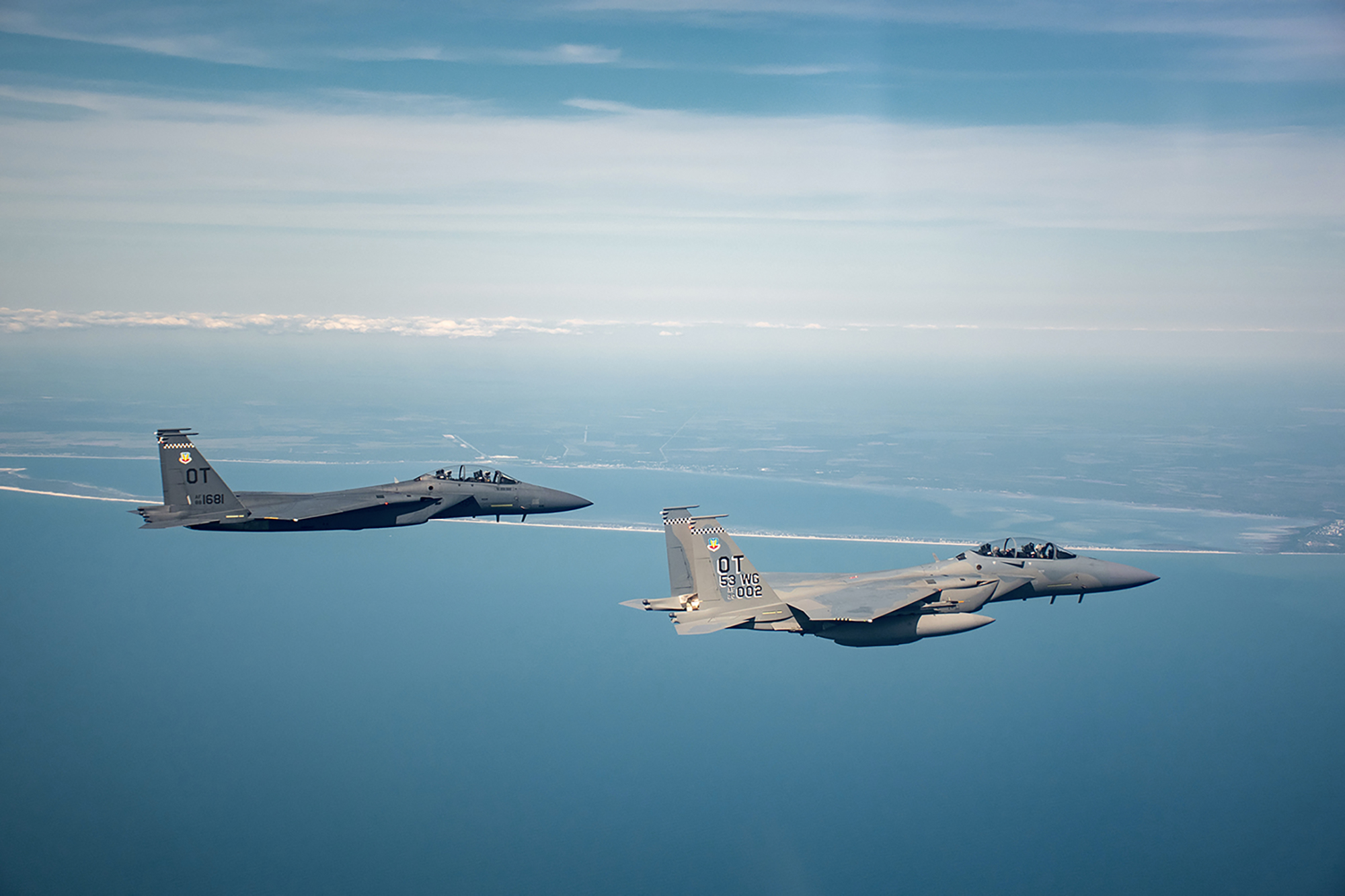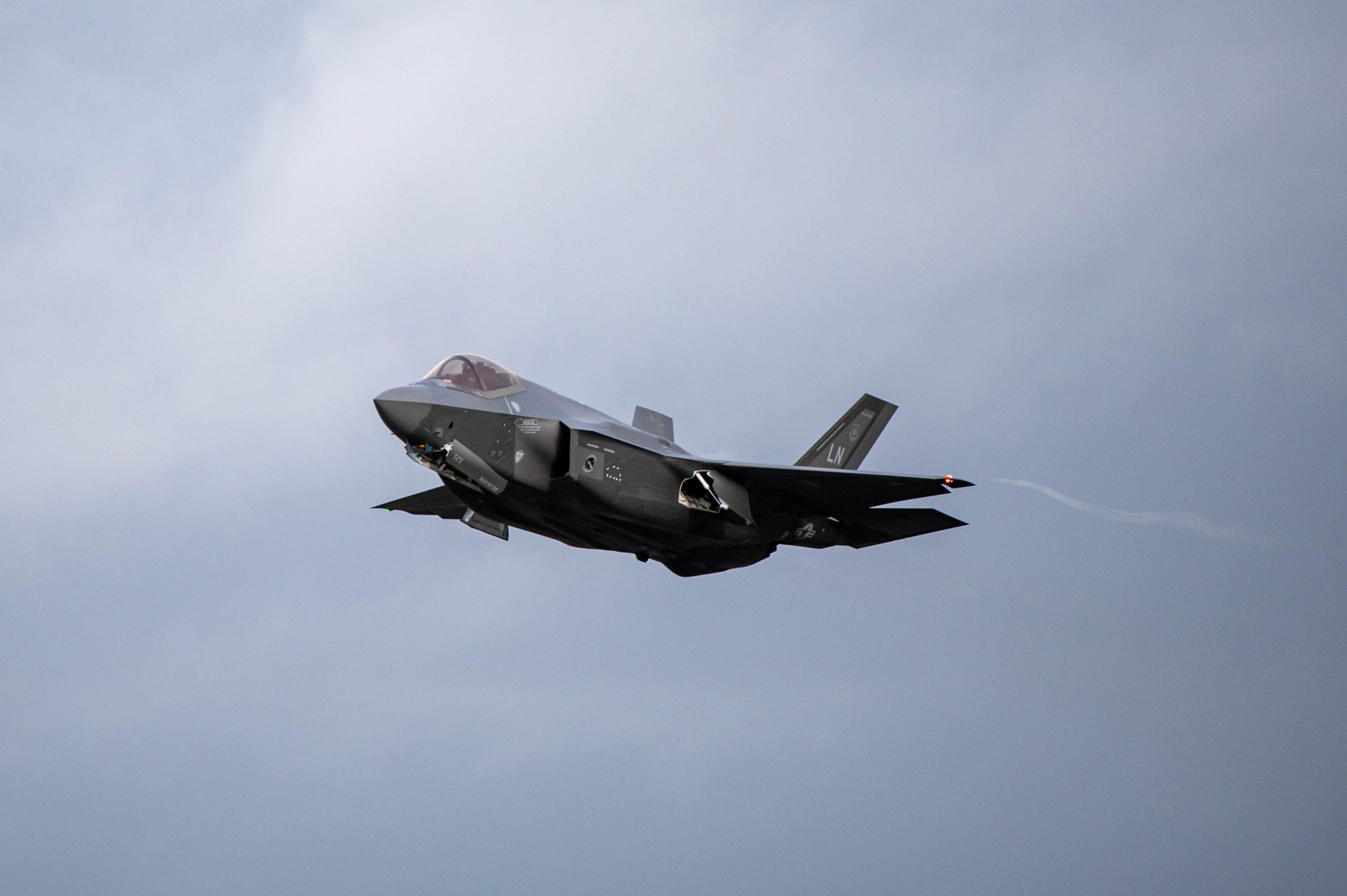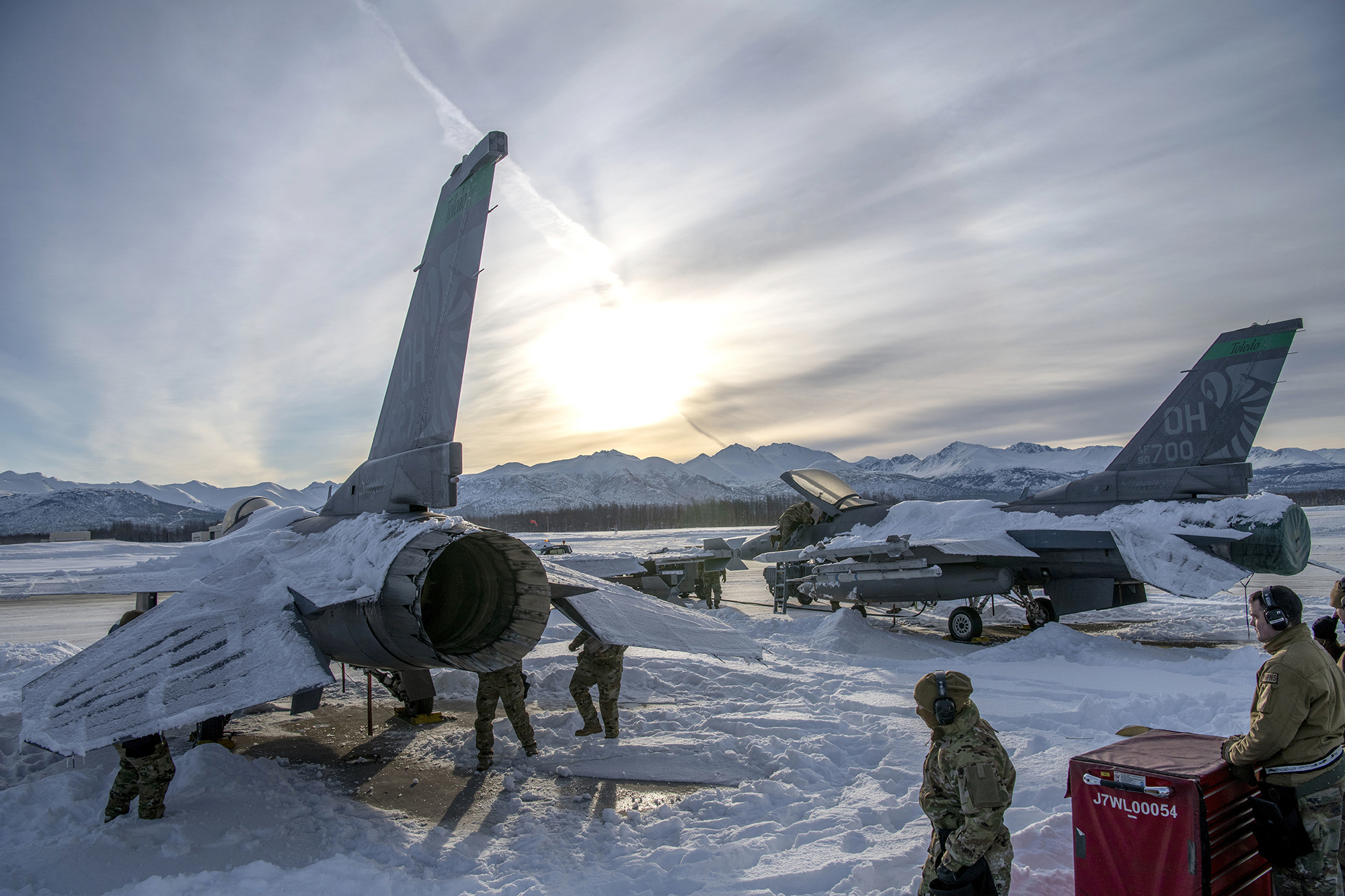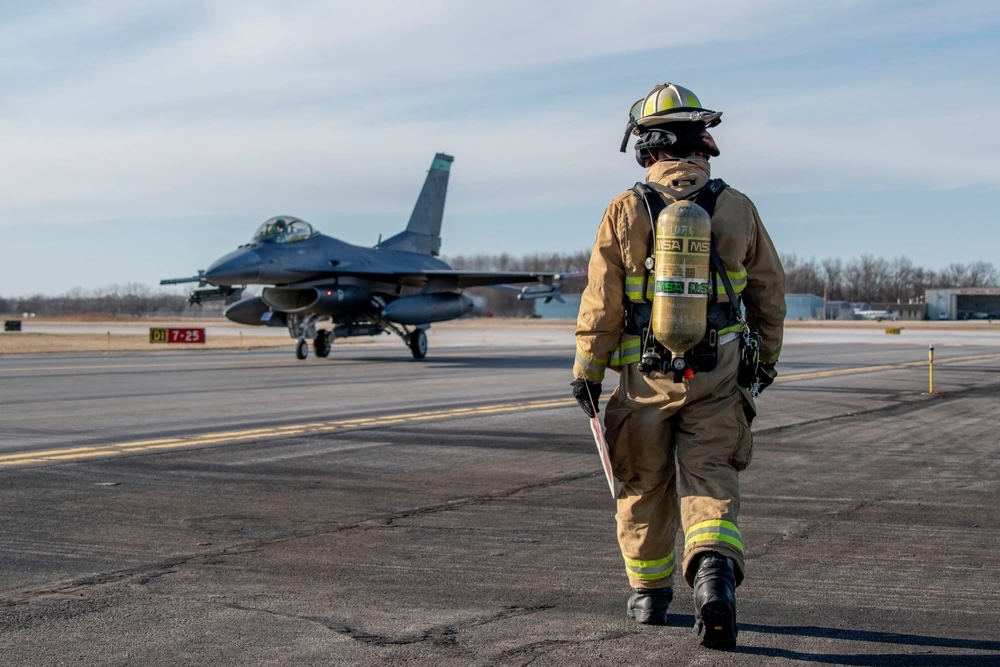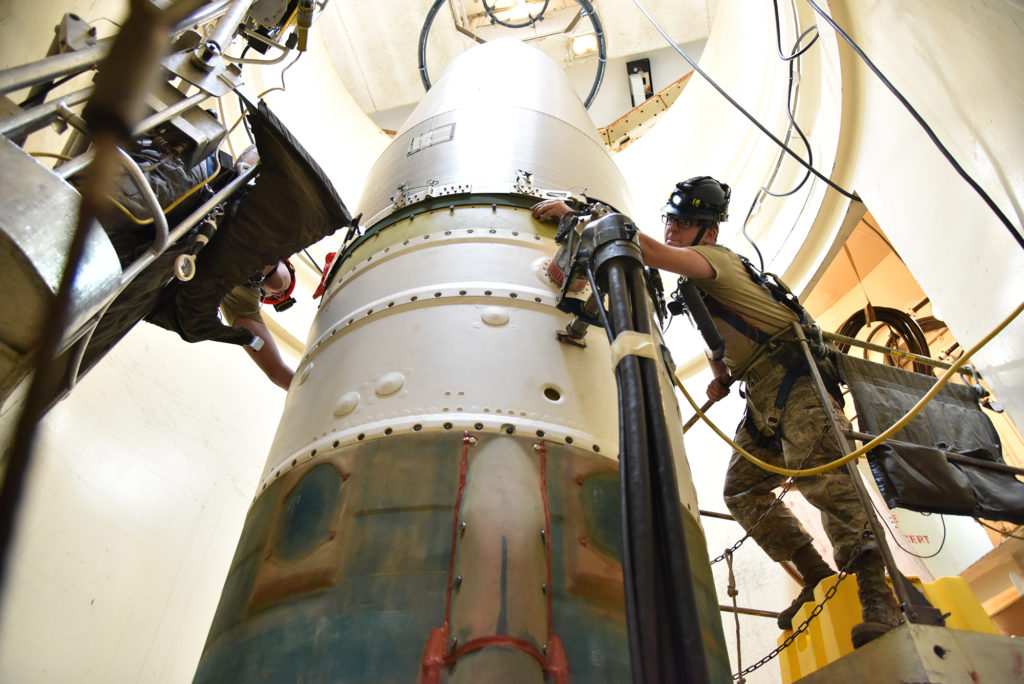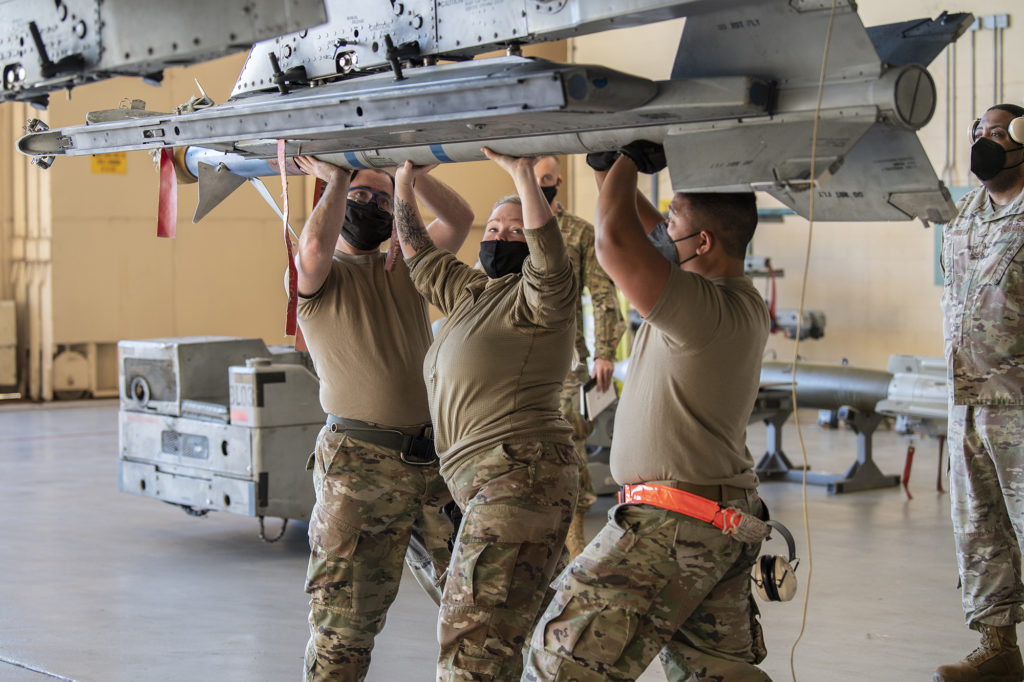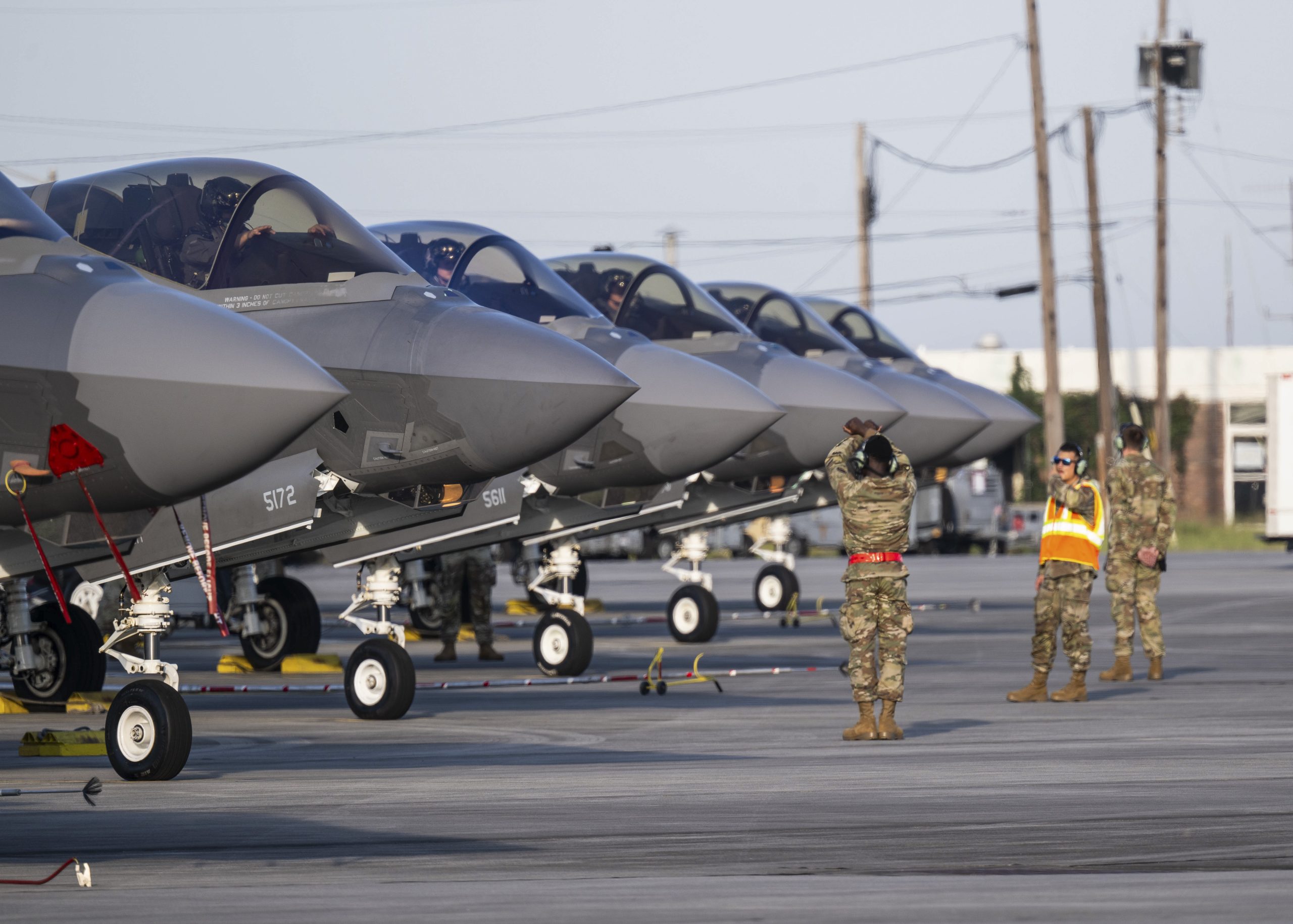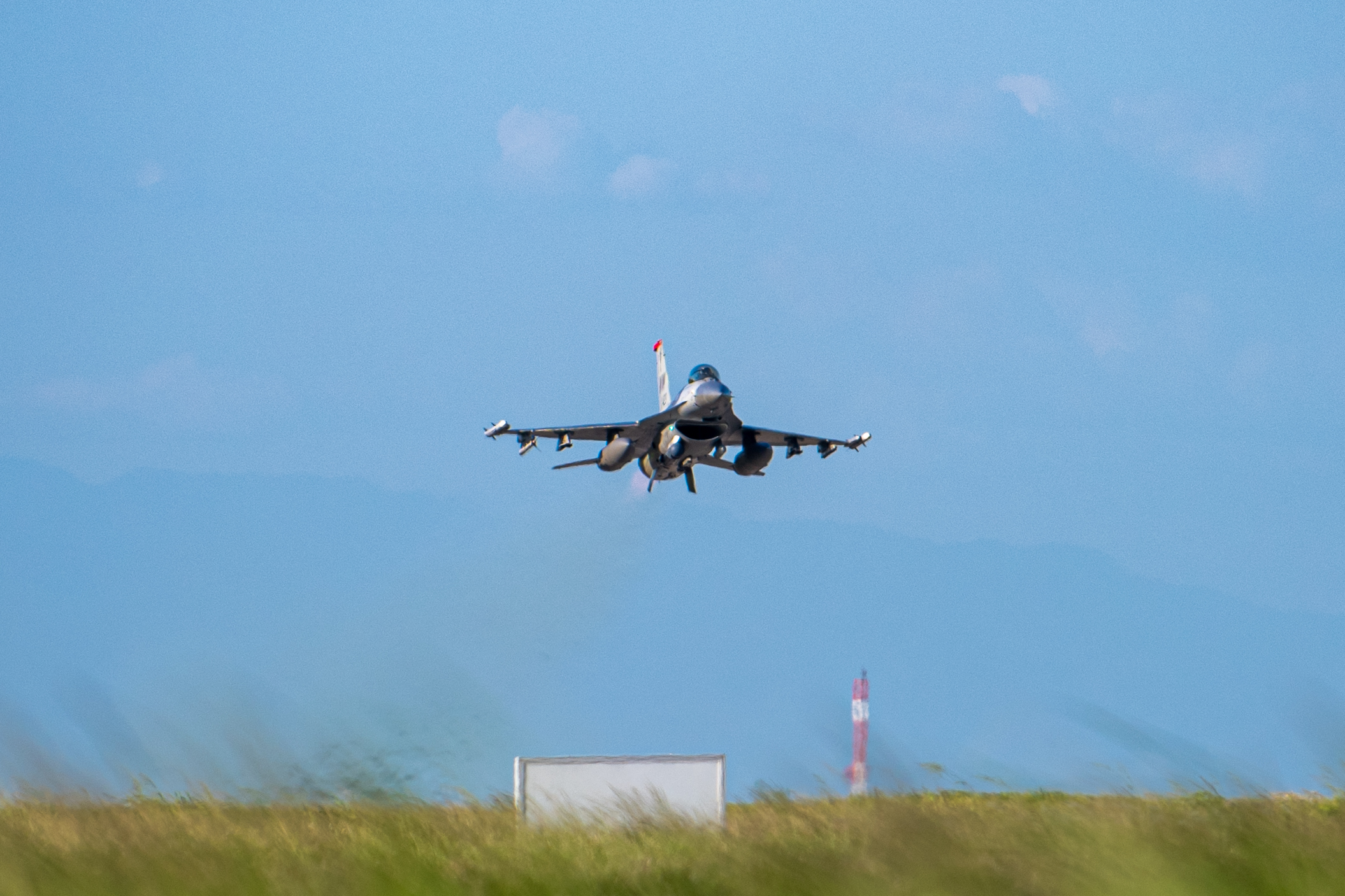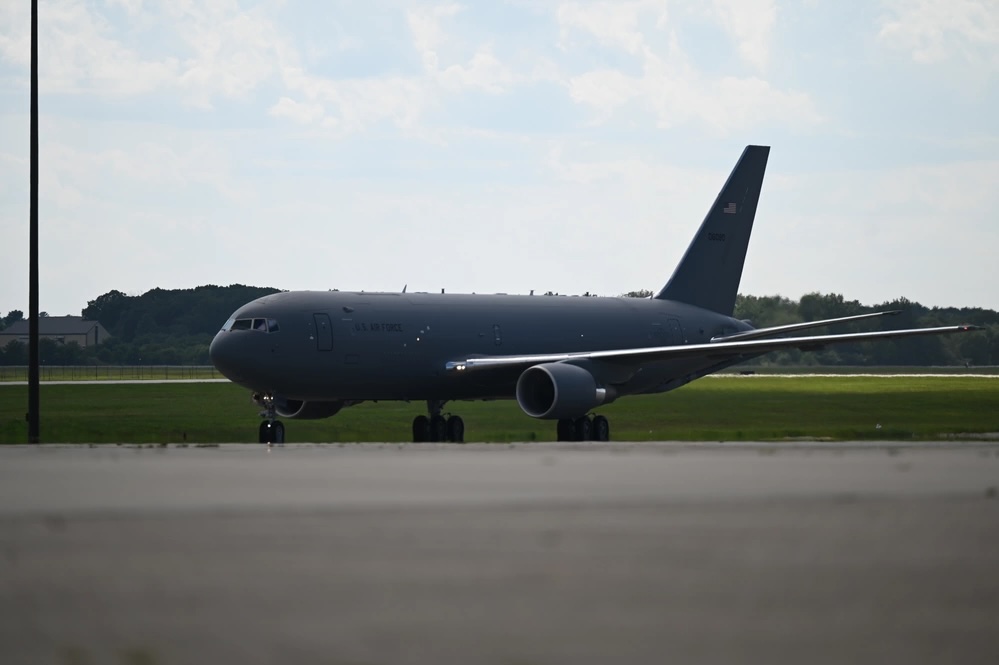The secretive Eagle Passive Active Warning Survivability System (EPAWSS), which will provide jamming and electronic protection for the F-15 fleet until its eventual retirement, has completed initial operational test and evaluation and is cleared for full-rate production, with initial operational capability expected in about a year.
Air Force fiscal 2025 budget documents show procurement for the program concludes in 2029, after an investment of $1.8 billion.
The Air Force “recently completed” IOT&E, “validating” that the system works to the service’s expectations, BAE Systems said in a press release. BAE makes the EPAWSS under contract to Boeing, which manages F-15E upgrades and builds the new F-15EX. Both aircraft will carry the EPAWSS.
Air Force Selected Acquisition Reports show that “Required Assets Available,” which is equivalent to initial operational capability, is now expected in about a year. Operational units will be equipped with the kit starting in the next few months.
In its budget justifications, the Air Force said the “Low Rate Initial Production (LRIP) and Full Rate Production (FRP) phases overlap in years FY 2024 through FY 2026 (following the FRP decision planned for FY 2024), providing a seamless transition to maintain the production schedule. Funding will be used to address Diminishing Manufacturing Sources (DMS) issues. EPAWSS’ designed service life (DSL) aligns with the DSL of the aircraft.”
The initial operational testing phase began in July 2023. The EPAWSS was tried out in an operational setting during the Northern Edge 2023 exercise, where, carried aboard two new F-15EX Eagle II fighters, it successfully demonstrated “cognitive” electronic warfare, the company said. Low-rate initial production of the system began in July 2022.
“Cognitive” EW applies artificial intelligence or machine learning to analyze signals from threat radars and other emitters and determine the best way to either jam or deceive them.
In the Pentagon’s Director of Operational Test and Evaluation annual report, issued in February, the organization said it will publish “a classified report on its findings” from IOT&E “to support the full-rate production decision.”
The OT&E program determined the EPAWSS was “potentially suitable” for deployment, if the rate of “software anomalies requiring crew intervention” can be brought down.
“However, if those improvements do not rectify the inaccurate system status displayed in the cockpit, aircrews may lose confidence in EPAWSS and/ or may be unaware of an actual failure,” the director of OT&E said in the report.
The director of OT&E also said the EPAWSS needs to pass one more assessment of its cyber protections, which should be complete later this year. It recommended improvements to built-in test gear, which likely was accomplished prior to the completion of IOT&E.
The Air Force’s fiscal 2025 budget request calls for $824 million over the next five years to finish buying and installing EPAWSS on the 99 F-15E Strike Eagles the Air Force is retaining. The service will retire 100 F-15Es in the next few years but is buying 94 new F-15EXs to replace them. The documents did not specify how many aircraft will be fitted with EPAWSS, year by year.
The funding profile stated for EPAWSS covers only the F-15E fleet that will be modified with it. The F-15EX “comes with” the EPAWSS already installed, and its cost is factored into the procurement cost of that aircraft.
The EPAWSS “provides instantaneous full-spectrum [electronic warfare] capabilities—including radar warning, geolocation, situational awareness, and self-protection. The system enables freedom of maneuver and deeper penetration into battlespaces protected by modern integrated air defense systems,” BAE said. Air Force budget documents say the system can “detect, identify, locate, degrade, disrupt and defeat air-to-air and surface-to-air threats during operations within highly contested environments.”
The Air Force won’t say much about the specific capabilities or methods used by EPAWSS. But with it, those F-15s not already headed to retirement due to structural fatigue and detectability by modern radars should be able to survive at ranges much closer to enemy air defense systems than the F-15’s old electronic protection kit, the Tactical Electronic Warfare System. The TEWS comprises “three functionally obsolete” legacy electronic warfare sets, the Air Force said in its budget justifications. These are the AN/ALR-56C radar warning receiver; the AN/ALQ-135 internal countermeasures set and the AN/ALE-45 countermeasures dispenser set.
A senior Air Force official said EPAWSS “makes it possible to keep the F-15 in the fight for [a number of] years, instead of just doing Homeland Defense or [flying in] a low-threat environment.”
Along with the EPAWSS, the F-15E and EX will have twice as much chaff and flares onboard with which to spoof enemy radars and infrared tracking systems.
“Our close collaboration with the U.S. Air Force allows us to mature EPAWSS cognitive processing capabilities,” according to BAE program director Chip Mosle.
“By incrementally testing and fielding cognitive EW solutions to proven systems such as EPAWSS, we are enabling tactical spectrum overmatch against advanced threats that are unpredictable, evolving, and adaptable.”
The Northern Edge demo “tested EPAWSS’ ability to rapidly respond to previously unencountered electromagnetic threats,” BAE said.
“The tests challenged the system’s ability to process in-mission sensor data, create exquisite techniques, and optimize waveforms in real time. Furthermore, the [Northern Edge] environment challenged the system to execute the tasks in a dense, unpredictable electromagnetic spectrum at a theater-exercise level.”
